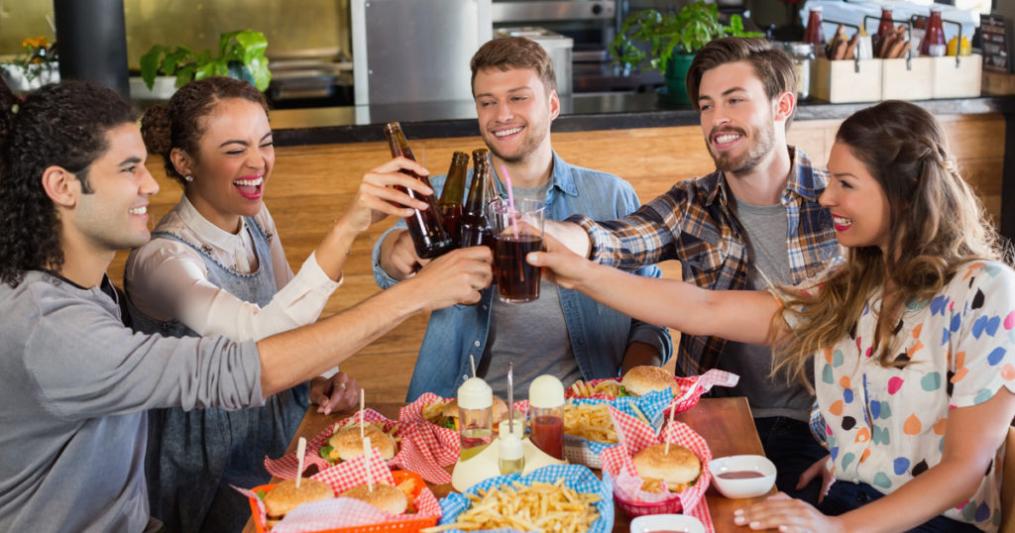How Can Casual Dining Restaurants Use Technology to Improve their Operations?
The casual dining restaurant industry is a highly competitive and ever-evolving landscape. With the rise of online food delivery services, changing consumer preferences, and increasing labor costs, restaurants are constantly seeking innovative ways to improve their operations and stay ahead of the curve. Technology has emerged as a powerful tool that can help casual dining restaurants streamline operations, enhance customer experience, and increase revenue.

Benefits Of Technology For Casual Dining Restaurants
Technology offers a wide range of benefits for casual dining restaurants, including:
- Streamline Operations: Technology can help restaurants streamline their operations by automating tasks, improving communication, and reducing errors. Point-of-sale (POS) systems, kitchen display systems (KDS), and inventory management systems are just a few examples of technologies that can help restaurants operate more efficiently.
- Enhance Customer Experience: Technology can also be used to enhance the customer experience by providing convenience, personalization, and engagement. Mobile apps, digital menus, and self-service kiosks are all examples of technologies that can make it easier for customers to order, pay, and interact with the restaurant.
- Increase Revenue: Technology can also help restaurants increase revenue by providing new sales channels, tracking customer data, and identifying upselling opportunities. Online ordering and delivery services, loyalty programs, and data analytics are all examples of technologies that can help restaurants generate more revenue.
Specific Technologies For Casual Dining Restaurants
There are a wide range of technologies that casual dining restaurants can use to improve their operations, including:
- Mobile Point-of-Sale (POS) Systems: Mobile POS systems offer portability, ease of use, real-time data access, and faster checkout, making them a popular choice for casual dining restaurants.
- Kitchen Display Systems (KDS): KDS systems improve communication between the front and back of the house, reduce errors, and speed up order preparation, leading to improved customer service.
- Inventory Management Systems: Inventory management systems help restaurants accurately track stock, reduce waste, and improve cost control, resulting in increased profitability.
- Online Ordering and Delivery Platforms: Online ordering and delivery platforms allow restaurants to reach a wider customer base, increase sales, and provide convenience to customers.
- Loyalty Programs: Loyalty programs help restaurants retain customers, increase repeat visits, and collect valuable customer data, which can be used to personalize marketing and improve the customer experience.
Challenges And Considerations

While technology offers numerous benefits, there are also some challenges and considerations that casual dining restaurants should be aware of:
- Cost of Technology: Implementing new technology can involve upfront costs, as well as ongoing costs for maintenance and updates. Restaurants should carefully evaluate their budget and prioritize technology investments based on their specific needs and resources.
- Employee Training: New technology requires training for staff to ensure proper usage and maximize benefits. Restaurants should develop effective training programs to ensure that employees are proficient in using the new technology.
- Data Security: With the increasing use of technology, concerns about data security and privacy become more prominent. Restaurants should implement robust security measures to protect customer and business data.
Case Studies And Success Stories
Numerous casual dining restaurants have successfully implemented technology to improve their operations. Here are a few examples:
- Chipotle: Chipotle has implemented a mobile app that allows customers to order and pay for their meals in advance, reducing wait times and improving the customer experience.
- Panera Bread: Panera Bread has introduced self-service kiosks that allow customers to order and pay for their meals without having to wait in line.
- Olive Garden: Olive Garden has implemented a loyalty program that rewards customers with points for every dollar they spend, which can be redeemed for free meals and other rewards.
Technology is a powerful tool that can help casual dining restaurants improve their operations, enhance customer experience, and increase revenue. By carefully evaluating their needs and resources, restaurants can select and implement the right technologies to drive innovation and success in the competitive casual dining industry.
YesNo

Leave a Reply